Momentum is growing behind a beautiful Paw Paw Festival that takes place at a 25-acre homestead in the foothills of the Blue Ridge Mountains in Frederick, Maryland– an event that’s fast becoming one of the DMV area’s best-kept secrets in the realm of local food.
Organized by permaculturist and landscape designer Michael Judd of Ecologia Design, the Long Creek Paw Paw Festival celebrates all things paw paw– a special native fruit that most Americans have never tried.
This is because Paw Paws (Asimina triloba) are a somewhat elusive regional fruit little known outside of the DC-Maryland-Virginia area– even despite being North America’s largest indigenous fruit and the closest thing to a “tropical” tasting fruit that the East Coast has to offer.
Paw Paws taste like a cross between a mango and a banana, with a sweet, custardy texture reminiscent of custard apple or chiramoya (a popular fruit of the tropics). They typically grow along shady riverbanks in the region, and have been foraged for generations. Most hikers, however, still pass paw paw fruit by unaware that some of the area’s most esteemed chefs (including José Andrés) clamor to work with this distinctive native fruit.
Paw Paw is highly seasonal and spoils quickly once ripe– which makes eating fresh paw paw fruit all the more special and ephemeral. (Because the fruit ripens so quickly, it’s not a viable crop to sell at grocery stores– so most people forage it or buy it from specialty growers like Judd.) Otherwise, it’s an elusive treat you can only occasionally find at farm-to-table restaurants in the region, from late summer to early autumn.
The paw paw fruit looks like a tiny mango (see banner image above) and it grows on stout, pleasantly leafy trees that can still be found throughout the Mid-Atlantic, though the numbers are dwindling with increased commercial development in the region.
In recent years, as a hedge against development, permaculturists have started a movement to plant more of these trees locally to boost awareness and community knowledge of this fruit, as part of larger efforts to support plant literacy and sustainability in the local food system.
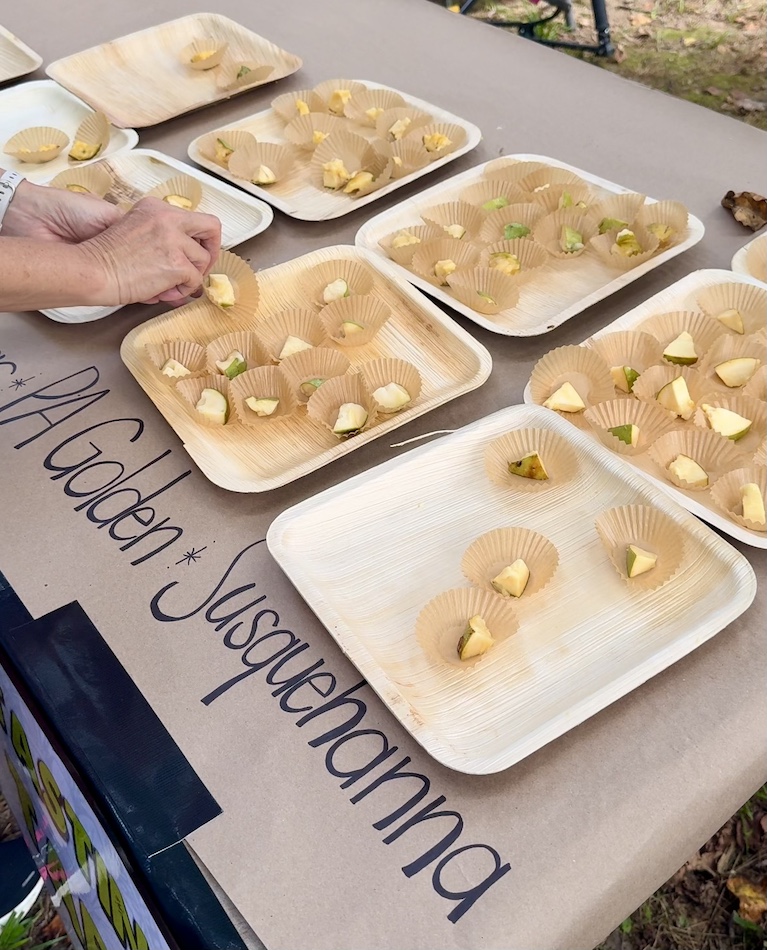
-
Sample A Variety of Paw Paw Fruit
At the Paw Paw Festival at Long Creek Homestead (now in its 10th year running!), visitors sample several varieties of this highly seasonal fruit, which ripens at the end of September each year (when the festival takes place).
You can buy fruit to take home, or try a cornucopia of paw paw-infused treats, from ginger paw paw immunity shots to paw paw pudding pies and paw paw sourdough starter.
Ultimately, the fruit is highly perishable and not recommended for baking; however, it freezes well and is suitable for making various sweet treats that call for curds or jams. (Paw Paw sourdough starter, meanwhile, is made from a yeast that naturally occurs on the skin of the fruit.)
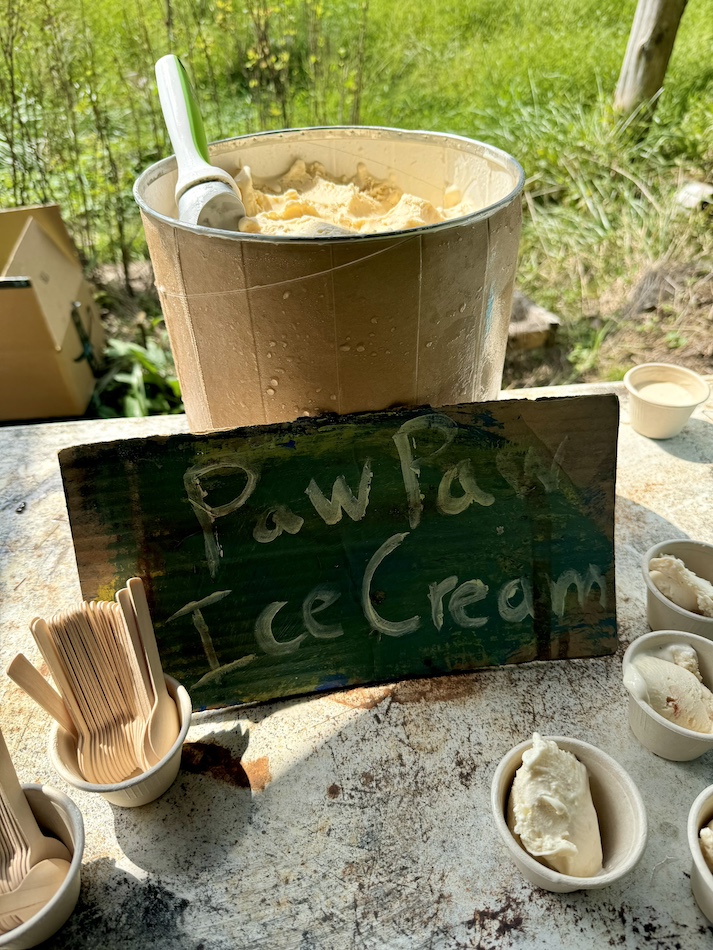
-
You Have To Try The Paw Paw Ice Cream
The iconic Paw Paw ice cream (given out freely throughout the event!) is a tradition year over year, and has become something of a festival pièce de résistance. You simply have to try it.
In addition to purchasable goods, there are also a variety of planting demonstrations and educational talks given throughout the day, including workshops on how to grow paw paws from seed.
On the activity side, there’s also live music, a paw paw nursery where you can buy your own paw paw tree for transplanting, as well as a variety of vendors selling wood-fired food, art, locally grown wheat and foraged nuts, as well as locally-made goods like ceramics and herb tinctures.
You can, of course, also purchase several varieties of paw paw to take home (they each have slightly different terrior, not unlike how different varieties of apples have different tastes). These different cultivars are nuanced, moreover– from the medium-bodied Susquehanna variety to the tiny and tender Allegheny. The crops are slightly different year to year, and that’s what makes the nuances in flavor so special.
Paw Paw famously spoils quickly when ripe, so trying it fresh, picked at the pinnacle of ripeness on site, is a real treat (and the most authentic way to experience the fruit). This distinct seasonality is also part of the charm and is likely why paw paw is still often referred to in locavore circles as “America’s Secret Fruit” —an insider treat for those who appreciate the beauty of a food experience that cannot be mass-produced.
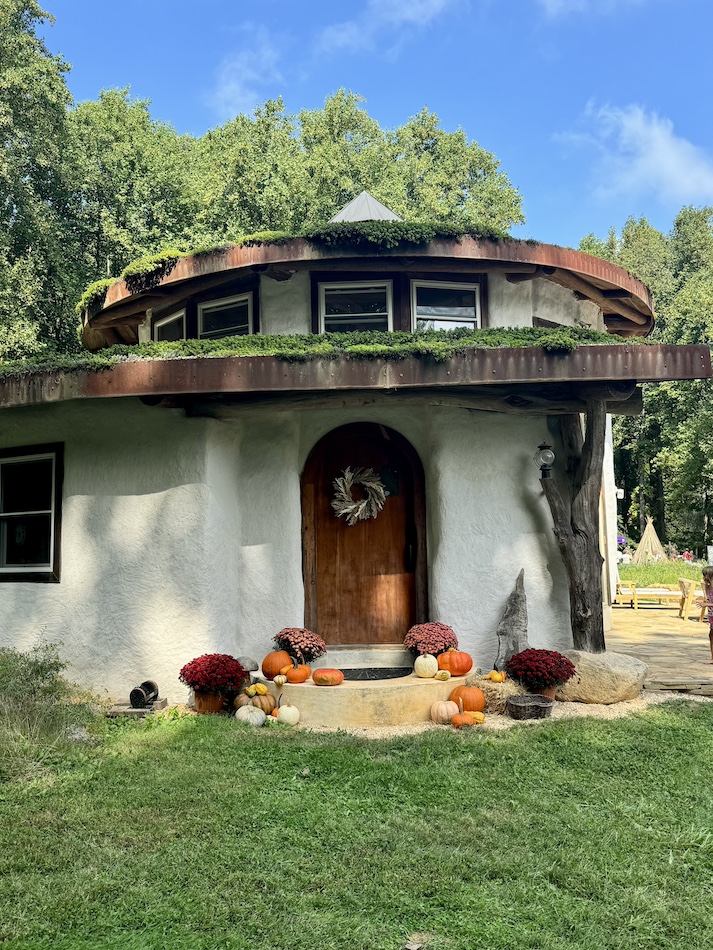
-
Marvel at The Iconic Strawbale House
Plus, visitors can also take a peek inside the epic, greenery-topped strawbale house, the signature landmark of the property designed by Michael Judd of Ecologia Design, the edible landscaper and permaculturist who hosts the event and lives on site.
It’s a beautifully designed space made of strawbales and reclaimed wood, much of which had already fallen or was felled on site when the home was built. (That’s a picture of the inside, below.)
For its architectural value alone, the home is its own attraction and another cool draw of the event.
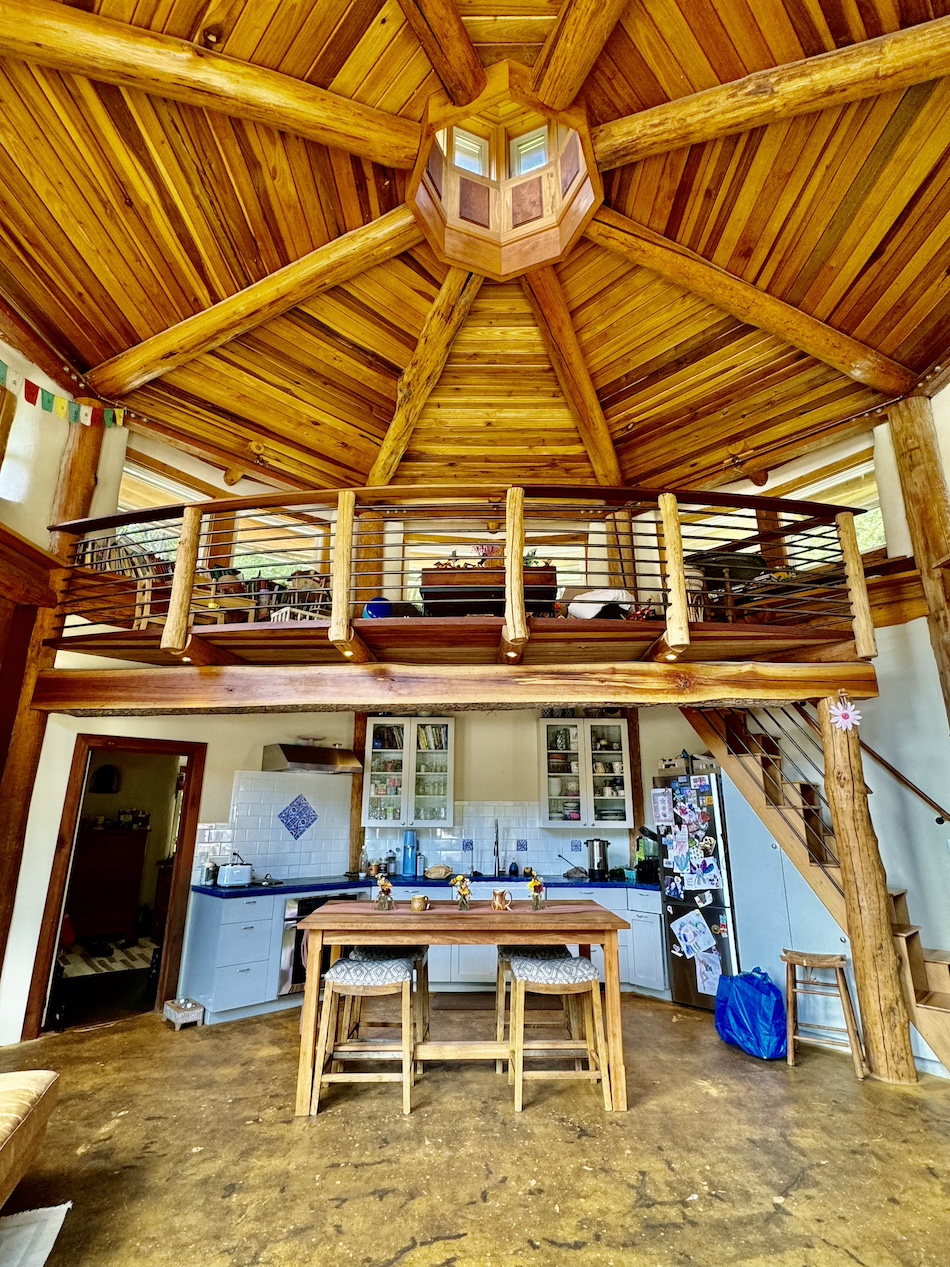
Long Creek Paw Paw Festival is also great for kids and families. There’s a sandbox, wooden fort, and monkey bars hanging beneath the canopy, a giant swing hanging from an enormous mother tree, face painting, and folksy music echoing through the forest throughout the event.
They also offer gentle yoga and children’s paw paw-themed storytime, as part of a larger schedule of events. There’s even an adorable “Paw Paw Possum” mascot that’s vaguely reminiscent of an avocado, which somehow makes the homespun celebration feel even more endearing.
Ultimately, it’s a lovely and novel event celebrating a fruit that is also a secret favorite of many notable DC-area chefs, including celebrity chef Jose Andres of World Central Kitchen and Minibar fame. (He frequently raves about Paw Paws on TikTok.)
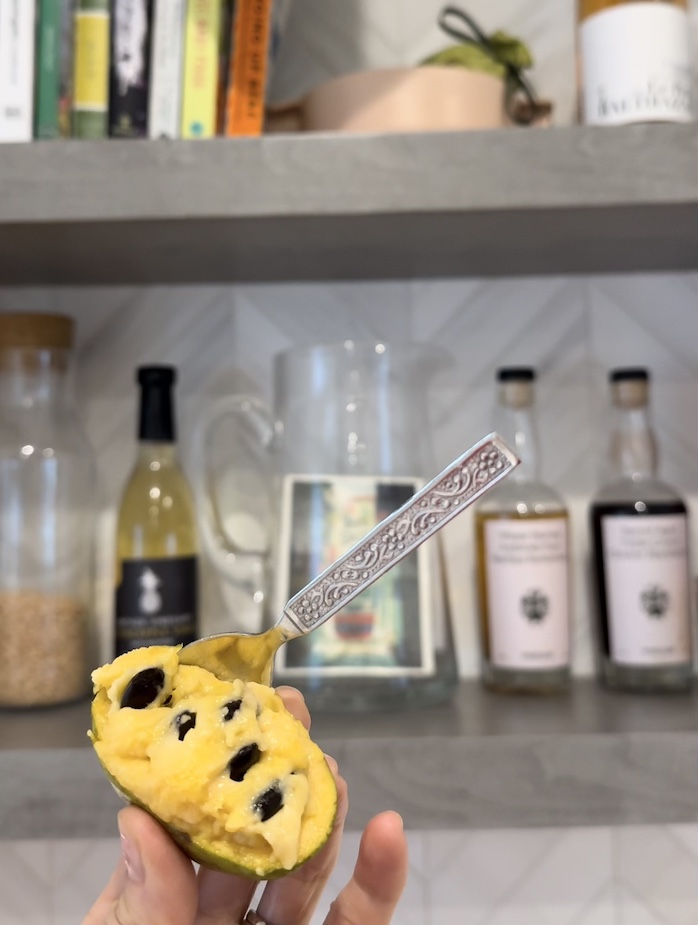
For many people attending the event, it’s also their first time tasting this fruit– a novel experience especially for folks who are sometimes decades into their lives.
In this way, the Long Creek Homestead Paw Paw Festival represents only a sliver of what could be the beautiful future of sustainable food wrangling in the region. (We love it, and strongly recommend going if you are within traveling distance.)
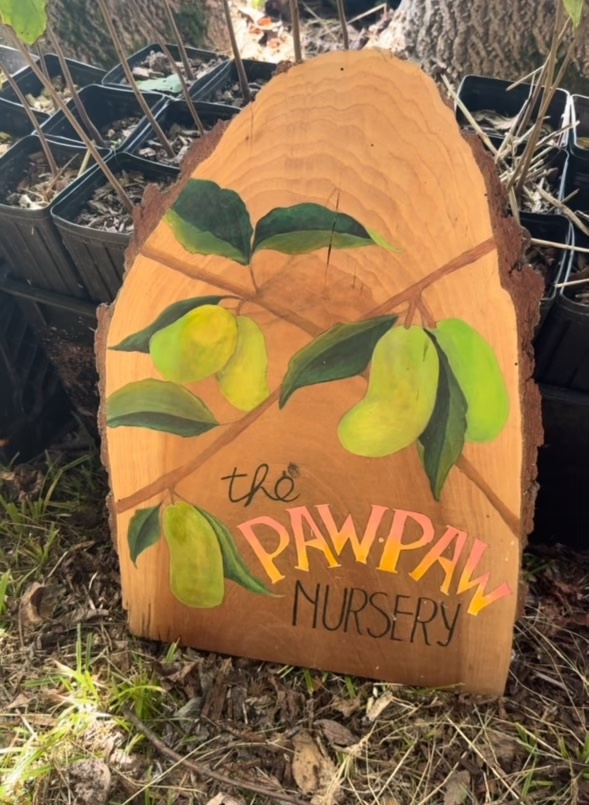
-
Buy Your Own Paw Paw Tree To Plant At Home
When people connect with local plants, especially native ones, there’s a symbiotic exchange of not just energy and nutrients, but of culture and meaning.
Events like this remind us of the inherent generosity of Mother Nature, and of the potential that we all have to connect with the local environment in an intimate, novel, and nourishing way.
Beyond food, getting to know plants in this way is simply healing to the spirit. Consequently, the grounds are full of novelty and driven by purpose– plus, it’s fun!
Ultimately, the festival is a parable of a larger movement that is happening in communities across America right now. People are getting more and more curious about what grows where, and why it’s important to eat locally and with a sense of seasonality and place.
It’s a dignified movement that asserts a certain spiritual raison d’être around nourishment– and it serves as an important reminder that our own backyards can provide us with a bounty of novelty and well being, if only we let them.
***
-
How To Get Tickets
Get your tickets for Ecologia Design’s annual Paw Paw Festival at Long Creek Homestead here.
^ This event takes place annually in late September, and it often sells out, with good reason. Thus, the best way to get early access to tickets is to sign up for Michael Judd’s newsletter, which you can do here.
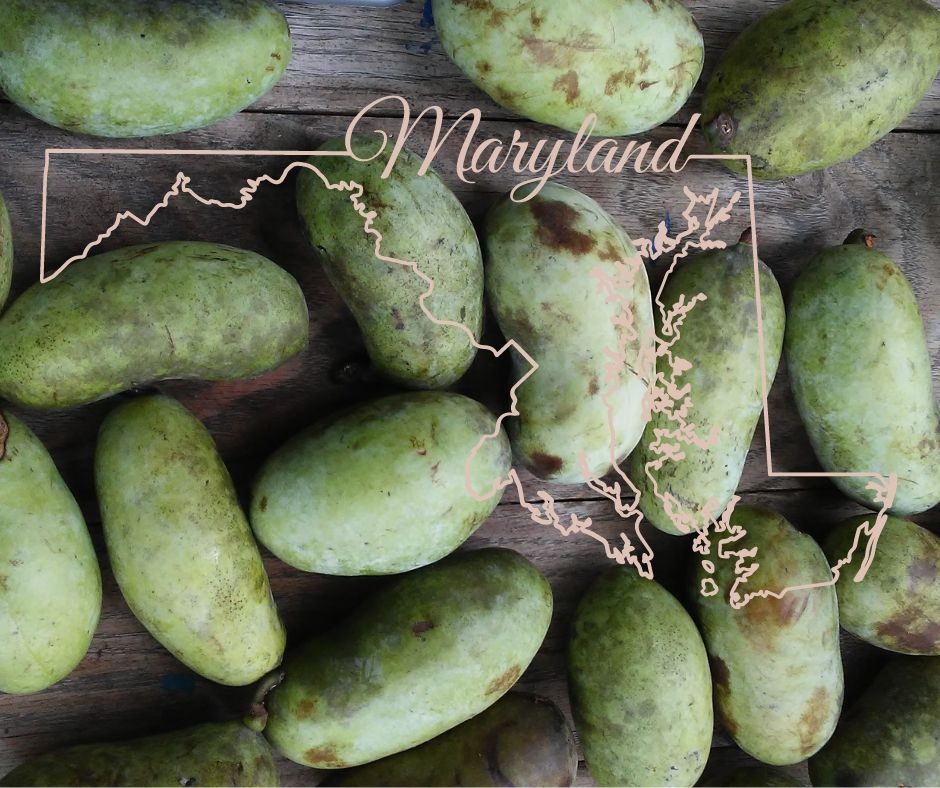
Leave a Reply